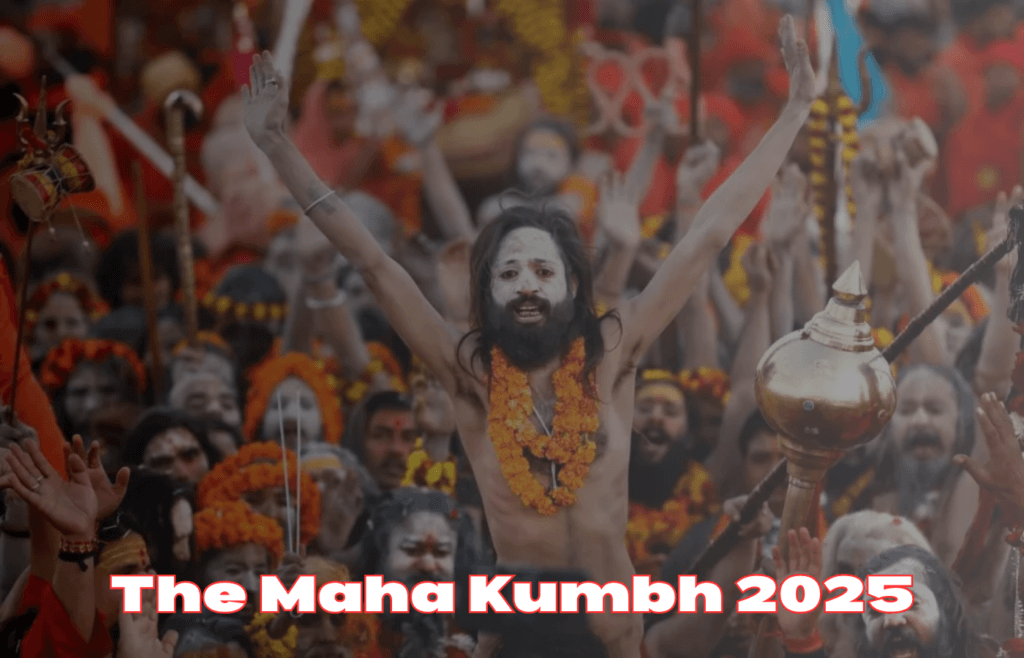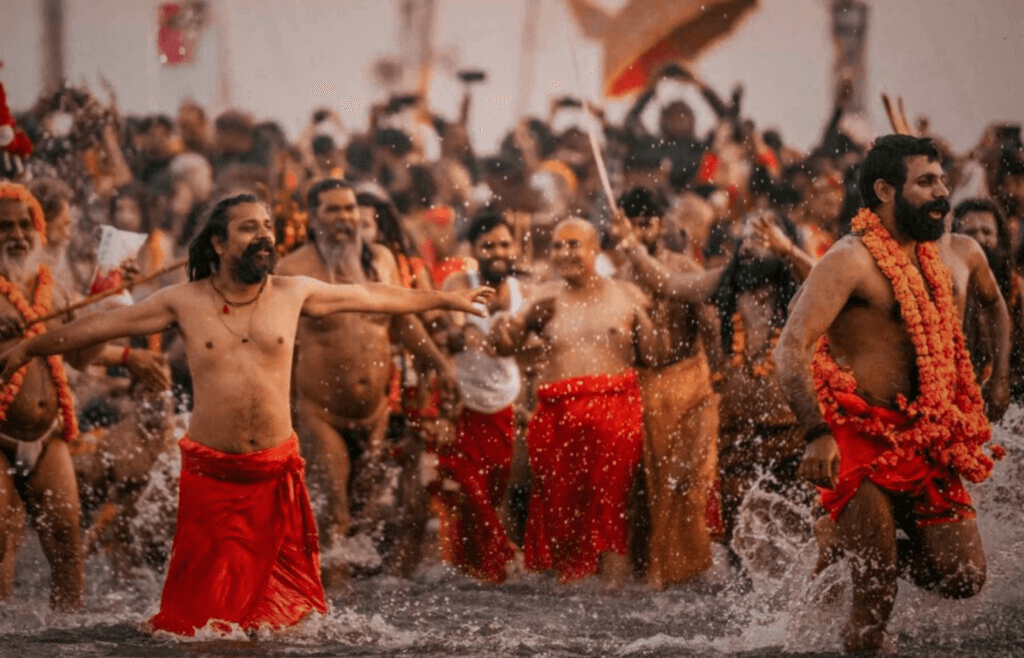
Maha Kumbh Mela is one of the world’s most significant and sacred spiritual gatherings, attracting millions of devotees and visitors. Rooted in Hindu mythology and ancient traditions, this festival is a powerful expression of faith and unity. But why is Maha Kumbh celebrated, and what makes it so extraordinary?
Table of Contents
The Mythological Origins of Maha Kumbh Mela
The origins of Maha Kumbh Mela trace back to the Hindu legend of Samudra Manthan, or the churning of the cosmic ocean. According to mythology, the gods (Devas) and demons (Asuras) churned the ocean to obtain Amrita, the nectar of immortality. During this celestial struggle, a few drops of Amrita spilled at four sacred locations in India—Prayagraj, Haridwar, Ujjain, and Nashik. These sites became the venues for the Kumbh Mela, where pilgrims gather to cleanse themselves of sins and attain spiritual liberation.

What Is Kumbh Mela?
Kumbh Mela is a sacred Hindu pilgrimage that attracts tens of millions of devotees from India and across the world. The event revolves around the belief in the spiritual purification power of sacred rivers, where pilgrims bathe to cleanse their sins and move closer to moksha (spiritual liberation).
The festival rotates among four key locations: Prayagraj, Haridwar, Nashik, and Ujjain, each associated with a holy river—the Ganges, Yamuna, Godavari, and Shipra. A full Kumbh Mela occurs every 12 years, with an Ardh Kumbh (half Kumbh) taking place every six years. The 2025 festival is a Maha Kumbh Mela, which occurs only once every 144 years, making it an event of unparalleled spiritual significance.
The Astrological Significance
The timing of Maha Kumbh Mela is dictated by celestial alignments. The festival occurs every 12 years when Jupiter, the Sun, and the Moon align in specific zodiac signs. The most significant Maha Kumbh Mela is held in Prayagraj (Allahabad), at the confluence of the sacred rivers Ganga, Yamuna, and the mythical Saraswati. This rare planetary alignment is believed to magnify the spiritual energy of the place, making it an auspicious time for purification and divine blessings.

The Rituals and Spiritual Practices
Maha Kumbh Mela is marked by grand rituals and ceremonies. The festival begins with the Shahi Snan (royal bath), where ascetics, sadhus, and millions of devotees take a dip in the holy rivers. This sacred act is believed to cleanse sins and lead to Moksha (liberation from the cycle of rebirth). Other significant activities include yoga sessions, spiritual discourses, devotional singing, and religious debates, creating an atmosphere of deep devotion and enlightenment.
Cultural and Social Impact
Beyond its religious significance, Maha Kumbh Mela is a cultural phenomenon. It serves as a convergence point for spiritual leaders, scholars, and seekers from around the world. The event showcases India’s diverse traditions, handicrafts, classical music, and local cuisines, offering visitors an immersive cultural experience. Recognized by UNESCO as an Intangible Cultural Heritage, the festival also contributes significantly to tourism and the regional economy.
How Long Does Kumbh Mela Last?
The festival typically lasts around 45 days, with the 2025 Maha Kumbh Mela scheduled from January 13 to February 26. The event concludes with the final Shahi Snan (royal bath), marking the culmination of the sacred bathing days. The exact duration and schedule are determined by astrologers and religious authorities based on planetary alignments.

What Happens During Kumbh Mela?
Kumbh Mela is a unique blend of spiritual rituals and cultural activities. The most important aspect is the Shahi Snan, led by groups of ascetics and sadhus, including the Naga Sadhus, who are known for their ash-covered bodies symbolizing renunciation. Alongside the holy baths, visitors experience spiritual discourses, religious processions, devotional singing, and cultural performances. Numerous temporary camps are set up by religious organizations, offering food, shelter, and opportunities for spiritual learning.
How Many People Attend Kumbh Mela?
Kumbh Mela is unparalleled in scale. The 2025 Maha Kumbh Mela in Prayagraj is expected to draw around 400 million people over the 45-day period. Pilgrims spread across the 12-km stretch along the riverbanks. Authorities estimate attendance using CCTV monitoring, drone surveillance, manual headcounts, and mobile phone data analysis to ensure crowd safety and management.

How Is Kumbh Mela Managed?
Organizing Kumbh Mela is an immense logistical effort. Authorities establish temporary cities with infrastructure to accommodate millions of attendees. The 2025 festival will cover 4,000 hectares (40 sq km) and include:
- 160,000 tents
- 40,000 police and security personnel
- 15,000 sanitation workers
- 99 parking lots for over 500,000 vehicles
- 30 floating pontoon bridges
- 67,000 streetlights
- 150,000 toilets
- 25,000 waste bins
Conclusion
Understanding why Maha Kumbh is celebrated offers insight into its deep-rooted spiritual and historical significance. It is more than just a festival—it is a testament to India’s enduring traditions and unshakable faith. For those seeking a transformative experience, attending Maha Kumbh Mela is a once-in-a-lifetime opportunity to witness devotion, faith, and spirituality on an unprecedented scale.


